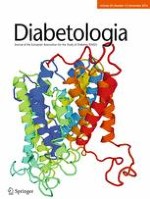Published in:

01-12-2016 | Article
The suppression of hepatic glucose production improves metabolism and insulin sensitivity in subcutaneous adipose tissue in mice
Authors:
Sylvie Casteras, Aya Abdul-Wahed, Maud Soty, Fanny Vulin, Hervé Guillou, Mélanie Campana, Hervé Le Stunff, Luciano Pirola, Fabienne Rajas, Gilles Mithieux, Amandine Gautier-Stein
Published in:
Diabetologia
|
Issue 12/2016
Login to get access
Abstract
Aims/hypothesis
Despite the strong correlation between non-alcoholic fatty liver disease and insulin resistance, hepatic steatosis is associated with greater whole-body insulin sensitivity in several models. We previously reported that the inhibition of hepatic glucose production (HGP) protects against the development of obesity and diabetes despite severe steatosis, thanks to the secretion of specific hepatokines such as fibroblast growth factor 21 (FGF21) and angiopoietin-related growth factor. In this work, we focused on adipose tissue to assess whether liver metabolic fluxes might, by interorgan communication, control insulin signalling in lean animals.
Methods
Insulin signalling was studied in the adipose tissue of mice lacking the catalytic subunit of glucose 6-phosphatase, the key enzyme in endogenous glucose production, in the liver (L-G6pc
−/− mice). Morphological and metabolic changes in the adipose tissues were characterised by histological analyses, gene expression and protein content.
Results
Mice lacking HGP exhibited improved insulin sensitivity of the phosphoinositide 3-kinase/Akt pathway in the subcutaneous adipose tissue associated with a browning of adipocytes. The suppression of HGP increased FGF21 levels in lean animals, and increased FGF21 was responsible for the metabolic changes in the subcutaneous adipose tissue but not for its greater insulin sensitivity. The latter might be linked to an increase in the ratio of monounsaturated to saturated fatty acids released by the liver.
Conclusions
Our work provides evidence that HGP controls subcutaneous adipose tissue browning and insulin sensitivity through two pathways: the release of beneficial hepatokines and changes in hepatic fatty acids profile.